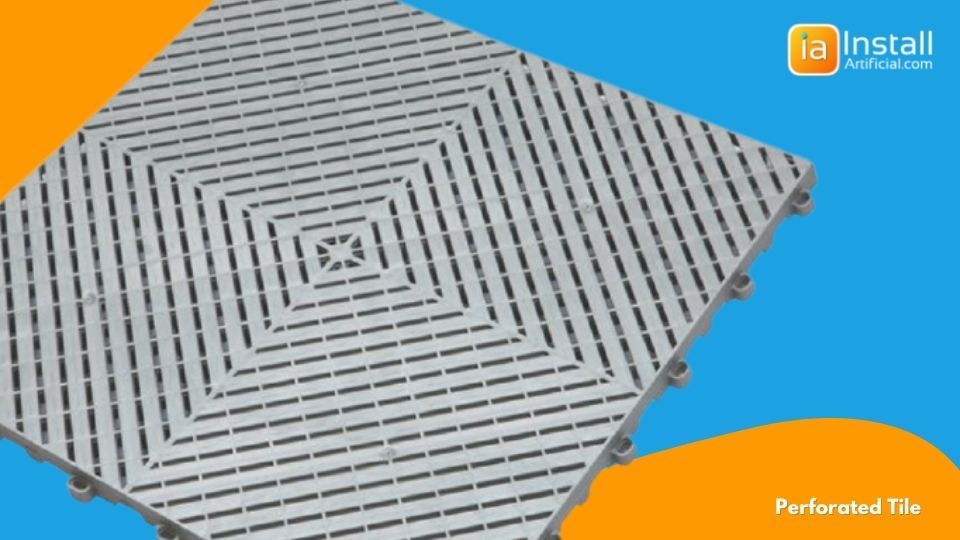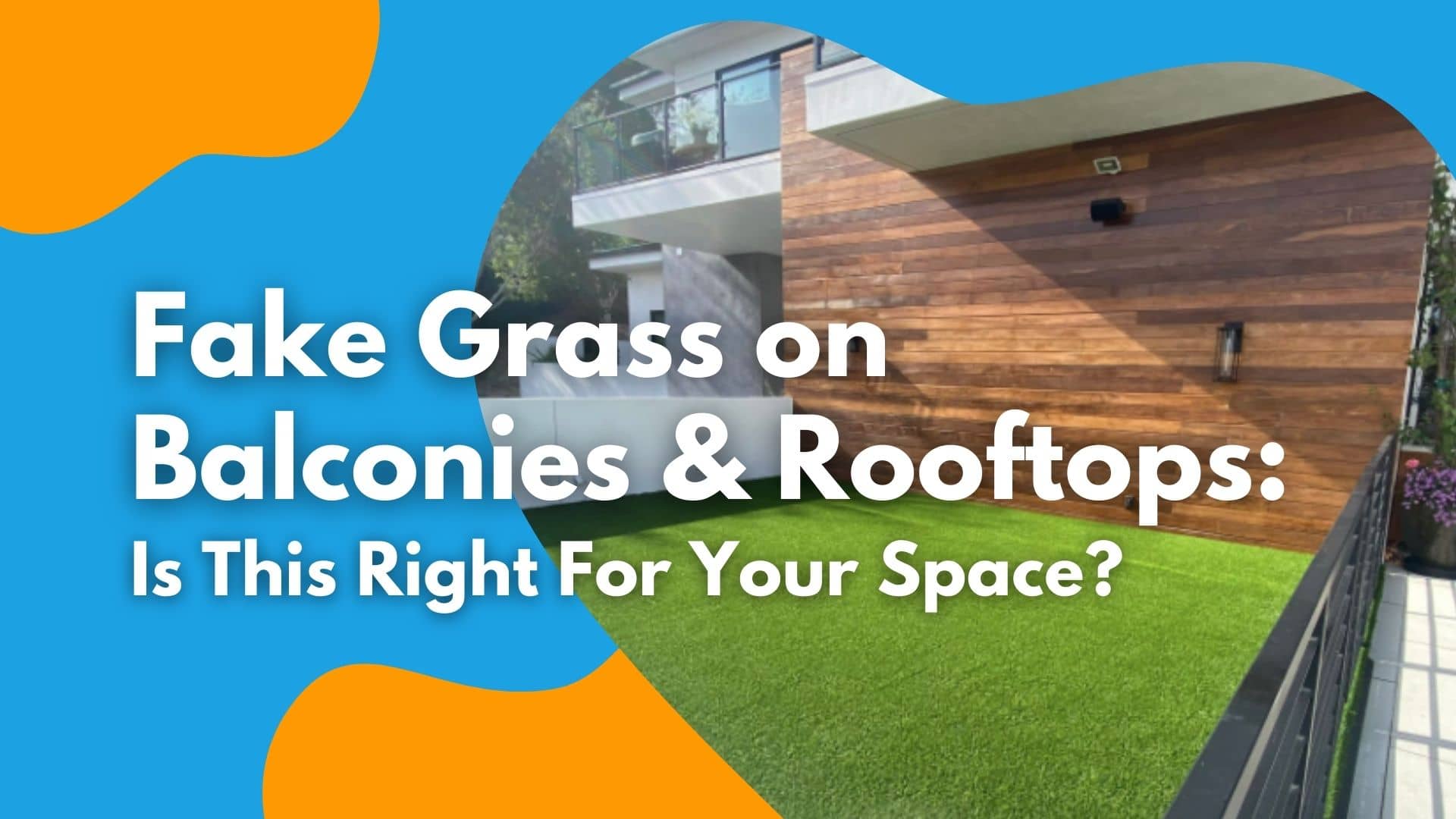
While putting artificial turf on a rooftop deck is a creative long-lasting way to enhance your space, it can come with costly repairs if not designed and installed...
Hear why installing a drainage layer is vital to a quality installation when laying turf on a balcony, patio, or rooftop. Understand your turf underlayment options, and make the best-educated decision regarding your space.

We're seeing more and more clients request artificial grass installation on their rooftops and balconies. It's a great addition because it creates a multifunctional space for the entire family to enjoy. Fake grass on balconies offers many benefits, the most sought after being the plush feel and barefoot-friendly surface.
Although synthetic grass installation has many perks, it can quickly become a financial burden when installed over hard surfaces without water movement in mind. You don't want to run into any artificial turf drainage problems. The best drainage layer for synthetic turf will vary depending on your space and intended use, below we'll introduce you to the different drainage layers we offer at InstallArtificial.
When considering laying turf, you'll want drainage for artificial grass over concrete and other hard surfaces. If water builds up underneath the fake grass, mold and mildew are likely to occur. Before installation, you must confirm that there is somewhere for rainwater and other liquids to go.
We do not recommend installing artificial turf in any area that has an issue with water pooling, address this prior to installation. Fortunately, most balconies and rooftops are designed and constructed with water drainage in mind. When it comes to laying an artificial grass drainage system, there are a few options that are considered:
When opting for no drainage underlayment, the artificial grass sits on stitches directly on the surface. If the artificial grass is permeable, it will have holes every few inches in every direction. While this is not the best ventilation, any water will eventually evaporate if the turf is under direct sunlight. However, the fake grass will likely hold water runoff which will lead to the growth of bacteria. We don't recommend opting out of a drainage system when installing turf on hard surfaces for this reason, especially if you live in a wet area.
Drain core is a flexible 5mm tall drainage grid. It allows grass to sit on its raised and bumpy surface and breath efficiently. This air void allows water to run off the roof or balcony quickly and offers more ventilation beneath the artificial grass surface.
While it is the most affordable drain grid, when walked on it produces a cracking noise. Also, because most turf applications on rooftops don't use infill, wrinkling during temperature fluctuation is a common concern. Drain core can expand under direct sunlight causing the fake grass to wrinkle or buckle if not glued down.

Air Drain is a rigid 1-inch tall drainage grid for artificial turf. It provides the best ventilation and fastest water runoff. Air Drain expands moderately in high heat but doesn't show the same waves or inconsistencies that you'll find with drain core. This is the most recommended turf drainage for residential applications.
The shortcoming of this drainage layer is that because it has holes throughout, sharp or pointy high heels may puncture the grass and potentially damage the artificial grass surface. Heels should not be worn on this surface, making Air Drain not ideal for areas where events are held.

Perforated tile drainage is rigid and small celled making it very durable. It is best for event areas or commercial spaces that experience heavy and consistent foot traffic. This sturdy interlocking drainage tile was designed to survive heels and heavy furniture. When installing perforated tile on balconies, rooftops, or patios, the artificial turf can also be glued directly to the tile for added convenience. Because this drainage underlayment is designed for commercial use, it will come at a much higher price.

Soft pad drainage is sometimes used for balcony or rooftop areas where kids are at play and low flow drainage. This foam pad offers additional shock absorption as well. Because soft pads run the risk of uplifting, this type of turf underlayment for drainage will need to be glued down if not installed in an enclosed area. This pad should not be used in extremely wet areas as it does not provide the same water movement as the other turf drainage layers.
So how do you install drainage for artificial grass on hard surfaces? You'll want to make sure the surface is clean, dry, and prepped prior to beginning the installation. Sometimes concrete will require different prep work and sealant applications prior to having turf installed over it.
The nice thing about turf applications over hard surfaces is the installation is much simpler and DIY-friendly! When installing your drainage, you simply cut the drain cell to size and lay it down over the surface prior to laying down the fake grass. With perforated tile, you'll connect the interlocking tiles to fit your space.
Without proper drainage, the longevity of your artificial installation will be greatly affected by the build-up of contaminants. Ignoring inadequate drainage on balconies and rooftops can be a costly repair, and cause flooding to happen. Once flooding on your balcony begins it can easily run into the interior of your home.
When considering installing fake grass on a rooftop or hard surface, make sure drainage is top of mind. Save yourself the hassle and worry, and choose InstallArtificial. Request an estimate today by clicking the banner below!

While putting artificial turf on a rooftop deck is a creative long-lasting way to enhance your space, it can come with costly repairs if not designed and installed...

Artificial grass on balconies and rooftops is a trendy way to amplify your space and has become more and more common among homeowners because it provides a cozy...